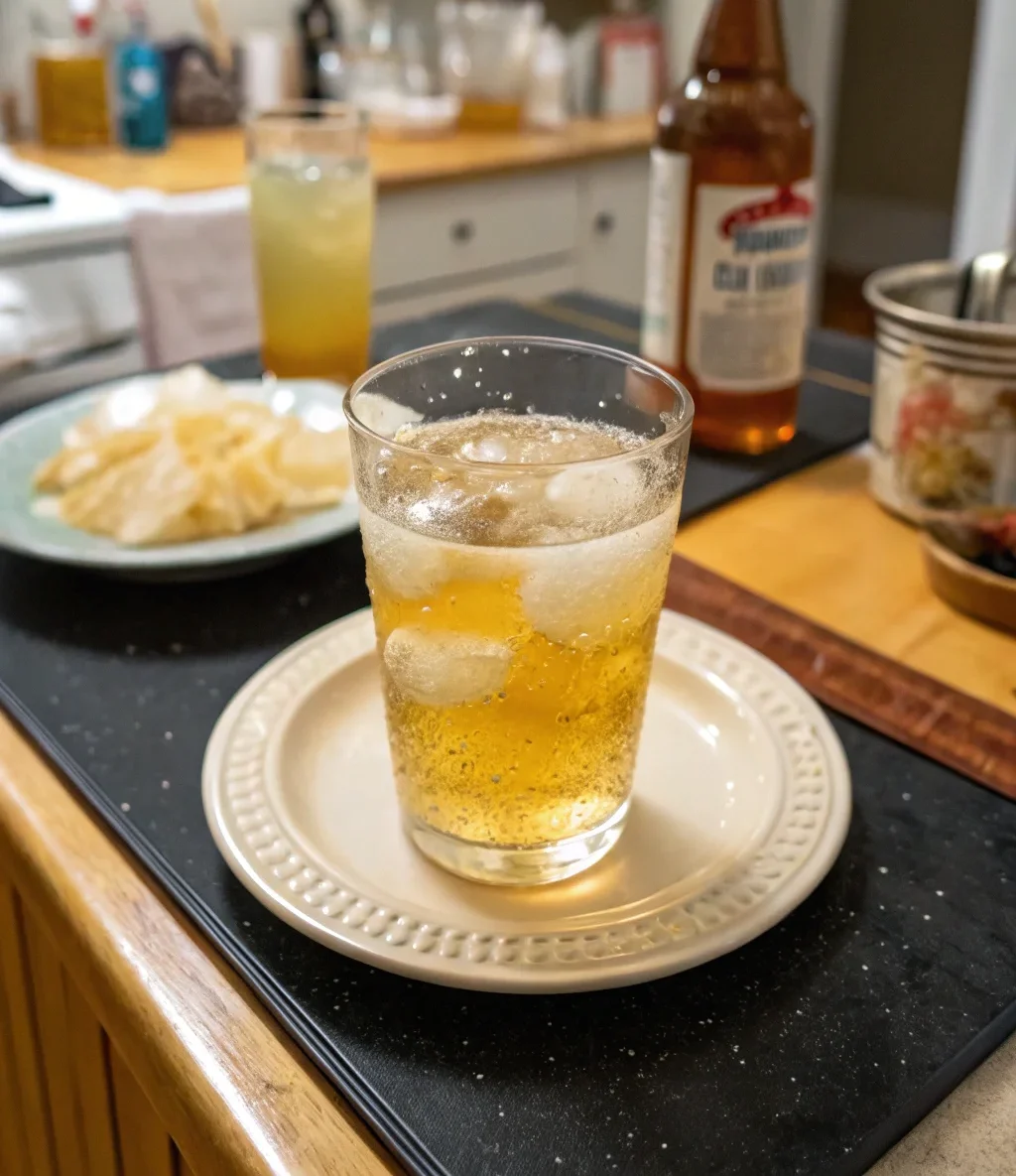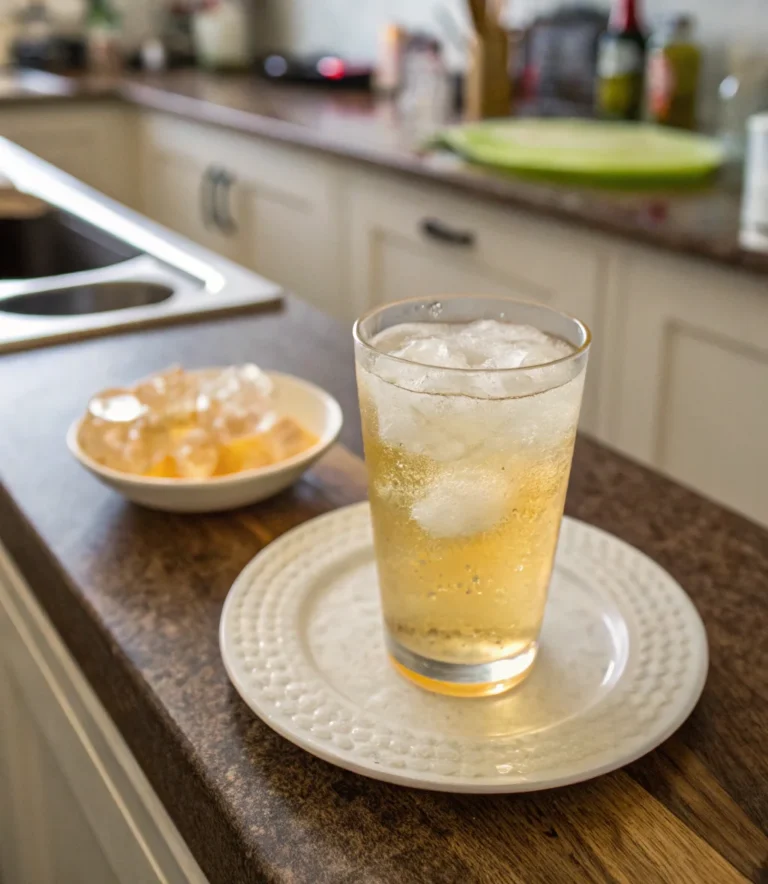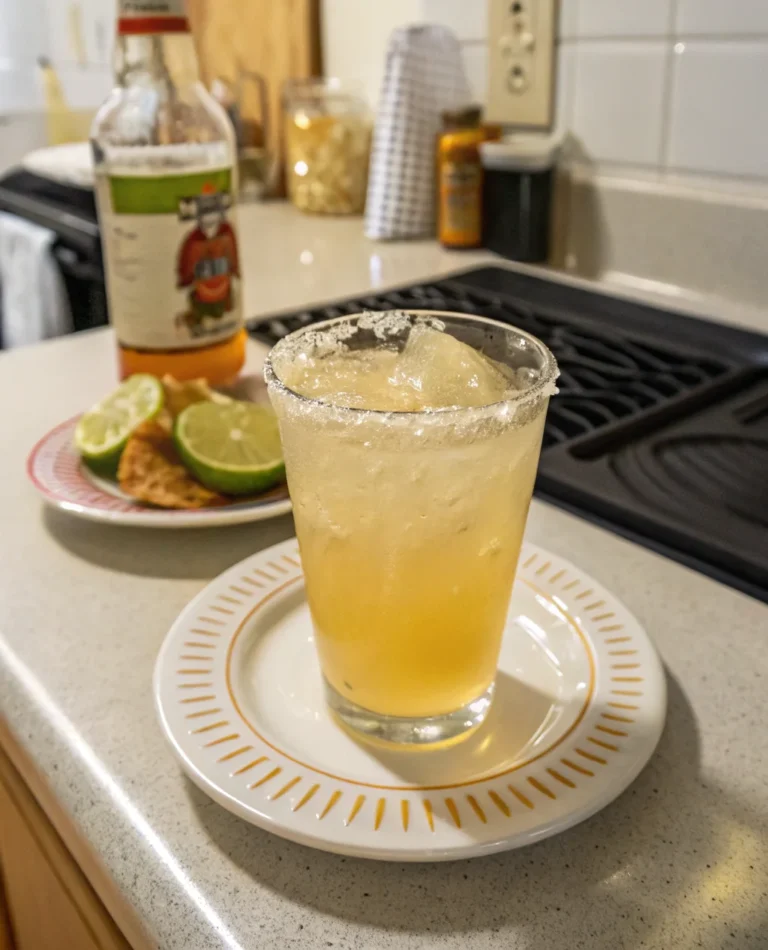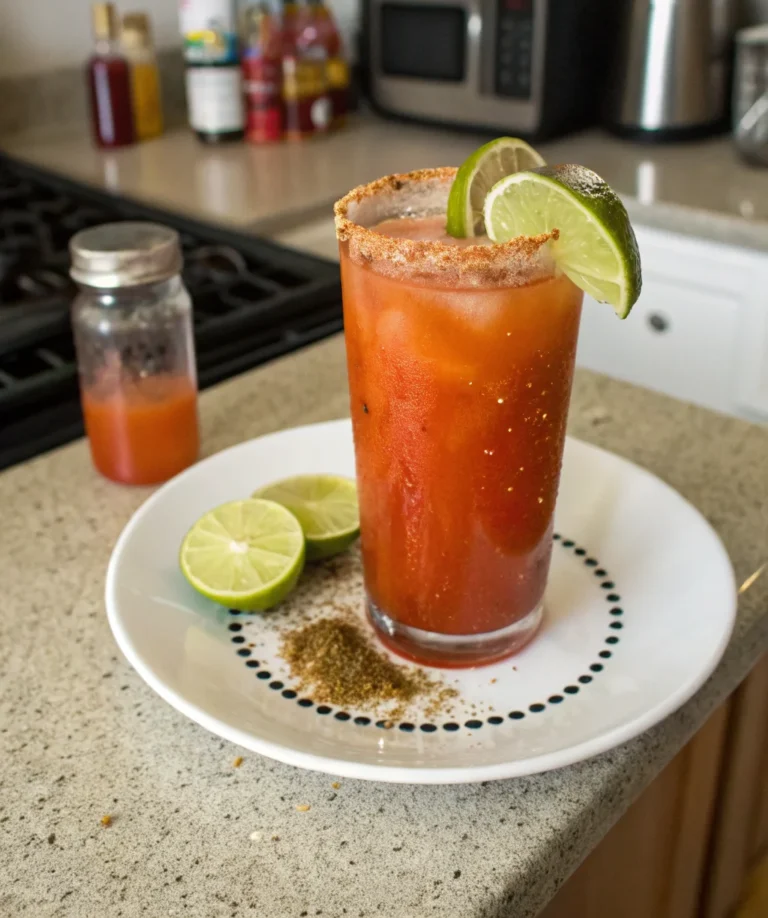Shandy
Introduction
Ah, the shandy—a delightful dance of beer and citrus that captures the very essence of a carefree summer afternoon. I remember the first time I encountered this refreshing concoction. It was during a sun-drenched picnic by the lake, where laughter mingled with the gentle lapping of waves. A friend handed me a glass, frosty and glowing with promise. One sip, and I was transported. The effervescence, the balance of bitter and sweet, it was poetry in a pint glass. Today, I’m thrilled to share this shandy recipe with you. Whether you’re a novice in the kitchen or a seasoned home chef, this recipe is as approachable as it is satisfying. Let’s dive into the world of shandy-making, a journey that promises to refresh your taste buds and perhaps even your spirit.
Table of Contents
Why This Recipe Works
• Simplicity: The shandy recipe requires just two ingredients, making it perfect for quick preparation without the need for extensive ingredients.
• Versatility: Customizable to suit individual taste preferences, whether you prefer a little more soda or a touch more beer, you can adjust the ratio easily.
• Refreshing Flavor: Combining beer with citrus creates a refreshing beverage that’s perfect for warm weather or light, casual gatherings.
• Low Alcohol Content: For those looking to enjoy a drink without overindulging, the shandy offers a lighter option with a reduced alcohol content.
• Cultural Heritage: Rooted in European tradition, the shandy carries a sense of nostalgia and cultural richness that adds depth to its enjoyment.
• Ease of Garnishing: A simple lemon or lime wedge transforms the presentation, enhancing both the visual appeal and the flavor profile.
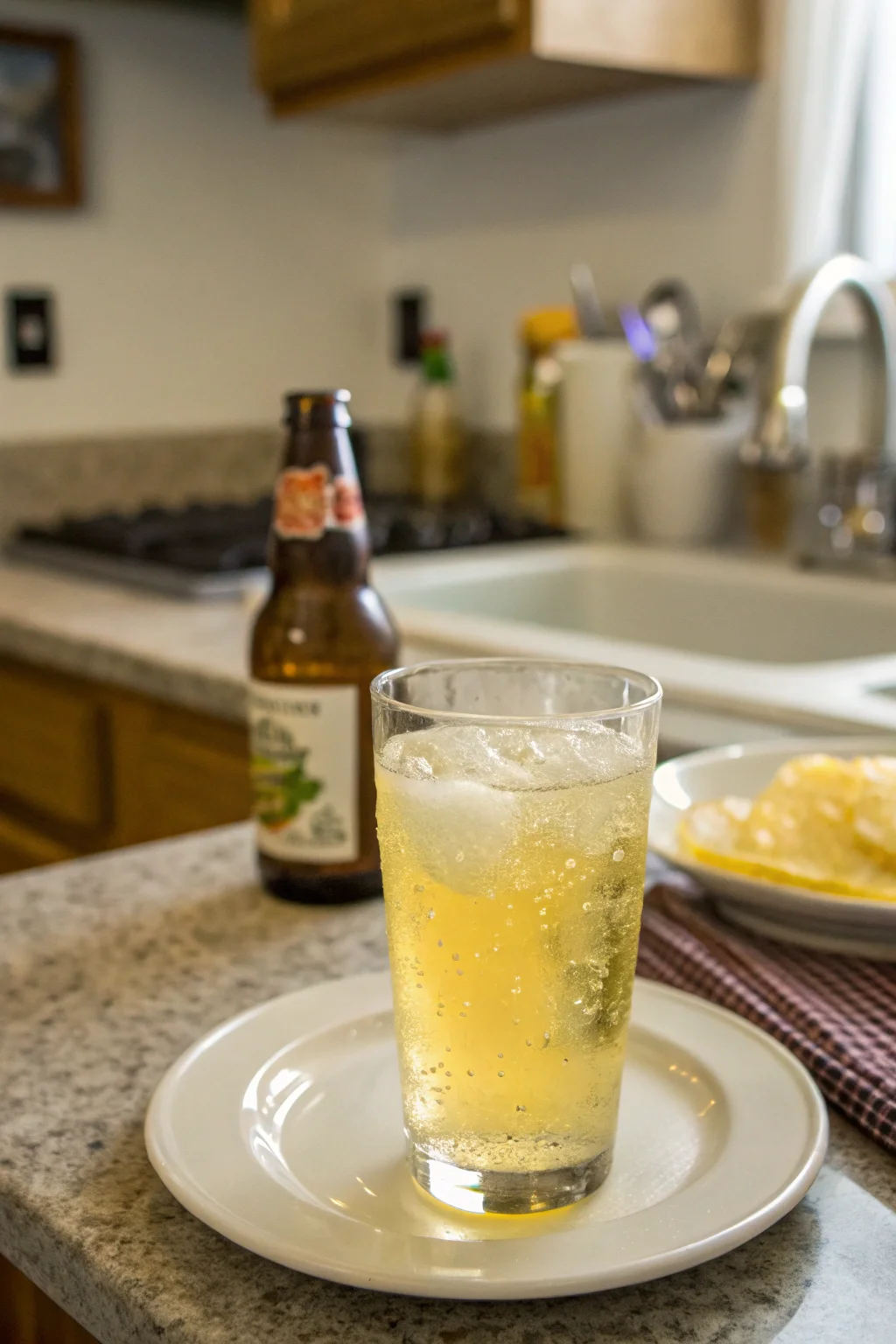
Ingredients
• Lager-style beer: This type of beer is light and crisp, serving as the perfect base for our shandy. It balances the sweetness of the soda or lemonade, creating a harmonious blend.
• Lemon-lime soda or prepared lemonade: Both options provide a citrusy sweetness that complements the beer beautifully. Lemon-lime soda offers a fizzy texture, while lemonade delivers a more tart, refreshing punch.
Step-by-Step Instructions
Pour the lager-style beer into a pint glass. Begin by choosing a pint glass, which is ideal for a shandy due to its size and shape. Pour the beer gently, tilting the glass to minimize foam. This step is crucial for maintaining the beer’s carbonation and ensuring a smooth blend with the soda or lemonade.
Top the beer with lemon-lime soda or lemonade. Once the beer is settled in the glass, slowly add your choice of lemon-lime soda or prepared lemonade. Pouring slowly helps maintain the carbonation and allows the flavors to meld seamlessly. The ratio is typically half beer, half soda or lemonade, but feel free to adjust according to your taste.
Stir gently to combine the ingredients. With a long spoon, gently stir the mixture. This step ensures that the beer and soda or lemonade are evenly mixed without losing too much carbonation, resulting in a well-balanced flavor.
Taste and adjust the ratio of beer to soda if desired. Here’s where you can personalize your shandy. If you prefer a more pronounced beer flavor, add a bit more beer. For a sweeter, citrus-oriented drink, increase the soda or lemonade.
Garnish with a lemon or lime wedge, if available. Adding a slice of lemon or lime not only enhances the presentation but also adds a refreshing aroma and an extra hint of citrus with each sip.
Serve immediately and enjoy the refreshing taste of your homemade shandy! The shandy is best enjoyed fresh, while the carbonation is still lively and the flavors are bright.
Prep Time: 5 minutes
Cooking Time: 0 minutes
Total Time: 5 minutes
Yield : 1 Serving
Table: Calorie Breakdown for a Typical Serving
| Component | Calories | Carbs | Protein | Fat | Sugar |
|---|---|---|---|---|---|
| Lager-style beer | 153 | 13g | 2g | 0g | 0g |
| Lemon-lime soda or lemonade | 50–100 | 13–26g | 0g | 0g | 12–24g |
| Total | 203–253 | 26–39g | 2g | 0g | 12–24g |

Patricia’s Tips for Success
Tip 1: Opt for a chilled glass to keep your shandy refreshingly cool.
Tip 2: If using lemonade, try freshly squeezed for a more vibrant flavor.
Tip 3: Experiment with different lagers to find your preferred flavor profile.
Tip 4: Consider adding a splash of bitters for a sophisticated twist.
Tip 5: Always pour the beer first to control the foam and carbonation.
Tip 6: Use the back of a spoon to pour the soda or lemonade gently down the glass side, preserving the bubbles.
Tip 7: Store opened soda or lemonade in the fridge to keep it fizzy for future shandies.
Cooking Variations
Variation 1: Use ginger beer instead of lemon-lime soda for a spicier, more robust flavor.
Variation 2: Swap lager for wheat beer for a richer, maltier base that complements the citrus notes.
Variation 3: For a fruity twist, add a splash of cranberry or pomegranate juice.
Variation 4: Try using limeade instead of lemonade for a tart, tangy variation.
Variation 5: Add a dash of mint syrup for a refreshing herbal note.
Serving Suggestions
Suggestion 1: Serve your shandy with a charcuterie board, pairing the drink’s citrusy notes with savory meats and cheeses.
Suggestion 2: Pair with light, summery dishes like grilled shrimp or fish tacos to complement the shandy’s refreshing qualities.
Suggestion 3: Enjoy alongside a fresh, crisp salad with a citrus vinaigrette for a balanced meal.
Suggestion 4: Serve during a brunch buffet with other light cocktails for a festive gathering.
Suggestion 5: Offer as a welcome drink at garden parties, setting the tone for a relaxing, enjoyable event.
Additional Thoughts
The shandy is a versatile drink with a rich history. Originating in Europe, it was initially crafted as a way to make beer more palatable to those who preferred a lighter beverage. Over time, it has evolved into a beloved drink worldwide, appreciated for its refreshing qualities and adaptability. The beauty of the shandy lies in its simplicity and the joy it brings, reminiscent of leisurely afternoons and good company. Crafting a shandy is not just about mixing beer and soda; it’s about creating an experience. Each step, from selecting your preferred beer to choosing the perfect garnish, is an opportunity to infuse your personality into the drink. The shandy’s charm is in its ability to transport you to a place of relaxation and enjoyment, whether you’re sipping it by the pool or sharing it with friends on a cozy porch. The act of making a shandy is an invitation to slow down, savor the moment, and appreciate the simple pleasures in life. As you become more familiar with the process, you’ll find yourself experimenting with new combinations, perhaps discovering a signature shandy that becomes a staple in your entertaining repertoire. Remember, the key to a great shandy is balance—not just in taste, but in the experience it offers. So next time you find yourself reaching for a drink, consider the shandy. It’s not just a beverage; it’s a celebration of flavor, tradition, and the joy of sharing something special with those around you.
Join the Conversation
As you embark on your shandy-making journey, I invite you to share your experiences and variations. Have you discovered a unique twist on the classic recipe? Or perhaps you have a cherished memory associated with this delightful drink. Join the conversation in the comments below or on our social media channels. Let’s celebrate the joy of shandy together, one sip at a time. Your feedback and stories are what make our community vibrant and truly Taste Buds Approved!
Conclusion
Crafting a shandy is a delightful experience that embodies the essence of simple pleasures. With its refreshing flavor profile and endless customization options, it’s a drink that appeals to a wide range of tastes and occasions. Whether you’re enjoying a lazy afternoon or hosting a lively gathering, the shandy is a versatile choice that never fails to please. Remember, the joy of a shandy lies not only in its taste but in the moments it creates. So gather your ingredients, invite your friends, and toast to the art of shandy-making. Cheers to new adventures and cherished memories!

Frequently Asked Questions
Q: Can I use any type of beer for a shandy?
A: While lager is traditional, you can experiment with different beers like wheat or pale ales to find your preferred taste.
Q: What is the best soda to use for a shandy?
A: Lemon-lime soda is popular, but ginger beer or even tonic water can provide interesting variations.
Q: How do I prevent my shandy from becoming too foamy?
A: Pour the beer first and add the soda slowly, tilting the glass to minimize foam.
Q: Can I make a non-alcoholic version of a shandy?
A: Absolutely! Use non-alcoholic beer or a sparkling water base for a refreshing mocktail.
Q: Is it possible to prepare shandies in advance for a party?
A: It’s best to prepare them just before serving to maintain carbonation, but you can pre-chill the ingredients for quick assembly.
Q: How can I make my shandy sweeter?
A: Add more soda or a splash of simple syrup for extra sweetness.
Q: What garnish options work well with shandies?
A: Lemon or lime wedges are classic, but herbs like mint or a slice of cucumber can add a unique flair.
Shandy
Course: BeverageCuisine: AmericanDifficulty: EasyShandy is the perfect summer drink, combining the crispness of lager with the zesty kick of lemon-lime soda. It’s a refreshing and easy-to-make beverage that’s ideal for warm weather sipping.
Ingredients
1 (12 ounce) bottle lager-style beer
½ cup lemon-lime soda or prepared lemonade
Directions
- Gather all ingredients: lager-style beer and lemon-lime soda or prepared lemonade.
- Select a pint glass for serving.
- Pour the lager-style beer into the pint glass, filling it about three-quarters full.
- Slowly top the beer with the lemon-lime soda or lemonade, allowing the flavors to mix gently.
- Stir lightly if desired to ensure even distribution of the soda or lemonade.
- Serve immediately and enjoy the refreshing taste of your homemade shandy.

